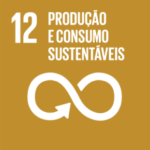Although mechanical recycling is the most widely used method, it cannot deal with multi-fiber textiles. The new approach promises to effectively recycle this waste, and can be applied to “fast fashion” waste.
Scientists have developed a new chemical process that makes it possible to quickly separate mixed fibers that make up the majority of post-consumer textiles (such as polyester, nylon, cotton and spandex), thus overcoming one of the main problems in textile recycling caused by the complexity and diversity of the components.
The approach, described in the scientific journal Science Advancescontributes to the recycling of textile waste and the reduction of this waste in landfills or incineration.
The process consists of treating polyester, cotton, nylon and spandex using microwave-assisted glycolysis with a zinc oxide catalyst, followed by solvent dissolution. This method electrifies the heat of the process, allowing for the rapid depolymerization (decomposition) of polyester and spandex in 15 minutes, while keeping the cotton and nylon intact.
“When electricity from renewable sources is available, the process does not produce carbon dioxide. This innovative approach makes recycling faster and more efficient, potentially leading to high-quality recycled materials and a more sustainable textile industry,” explains scientist Dionisios Vlachos, co-author and professor of chemical engineering at the University of Delaware, in the United States, in statements to PÚBLICO.
According to the scientist, mixed textiles “are generally treated with dyes, finishes and additives, making recycling processes more complicated. Mechanical recycling, which is the most commonly used method [devido à sua simplicidade e baixo custo], cannot deal effectively with multi-fiber textiles, additives or dyes, leading to a degradation of the quality and value of the fibers (…). Rapidly breaking down synthetic fibers while preserving natural fibers can help create a more sustainable and circular textile industry, where old clothes can be recycled into new, high-quality materials.”
According to the study, improving this process has the potential to achieve a global textile circularity rate of 88%.
“The increase in global population and wealth has increased the demand for fiber production, with 113 million tons of global fiber produced in 2021 and 149 million tons projected for 2030, if business as usual continues. The growing demand for textiles and the shorter lifespan than in the previous generation, due to fast fashion, result in a substantial accumulation of waste, estimated at 92 million tons per year worldwide. Less than 1% of textile waste is recycled, with around 73% going to landfill or being incinerated, 14% lost during production and collection and 12% recycled into lower value applications. This results in a notable loss of valuable resources and substantial environmental problems,” reads the report.

She might have chosen to study Meteorology and Oceanography, but ultimately pursued Communication. And that's fine because if they don't get their weather predictions right, she wouldn't be the one to change that. She started by looking for sustainable ideas and projects for the university, and since then, she has never stopped (who stops, really?). She loves to watch tv shows, but she watches few because she is demanding. You don't need much to convince her to embrace new, "greener" habits and challenges.
Related articles
Sustainable Development Goals 🍃

This article promotes an action that encourages the reduction of waste generation through prevention, reduction, recycling, and reuse.
➡️ To discover more businesses that are aligned with Sustainable Development Goal 12 “Sustainable Production and Consumption” click here.
➡️ For news, tips and interviews about this topic, click here.
➡️ Want to know more about the 17 United Nations Sustainable Development Goals? Click here
Esta publicação também está disponível em:
![]() Português (Portuguese (Portugal))
Português (Portuguese (Portugal))




